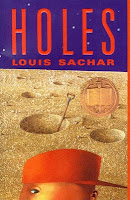I think we should be wise how much time we spend online, especially if it has the potential to interrupt real-world relationships.
And for fiction writers, I think we should write first and blog later.
But in the end, blogging gives back more in fun, inspiration, help, camaraderie, and motivation than it takes in terms of time.
Without an online community of writers, I wouldn't have found out about NaNoWriMo a few years ago. I've never seen it mentioned yet off-line, even though it's huge, with hundreds of thousands of people participating.
I've read (and applied) more helpful advice from blogs of writing professionals and amateurs in a year than I got from reading paper publications-that-shall-not-be named for many, many years. Primarily because you can immediately respond and get responses; it's not a one-way street. That makes it more meaningful, more valuable. Not sure exactly about the economics behind that, but I believe its true.
Other bloggers share their creativity and it is so cool how it sparks creativity in me, too. How we all bounce ideas and tips and blogfests and good reads and our bad days and good days around and off each other and it ends up being more than the sum of its parts.
Thank you Sophia Richardson for mentioning your idea of 30 pitches in 30 days and then following through with lots of great tips and experiences and, of course, pitches.
Thank you Katherine Owens for sharing that Edittorrent post (yes, this one here) and its ticking clock that sparked a HUGE flood of crazy-cool ideas for the NaNoWriMo outline I'm working on right now.
Thank you T.L. Conway for inviting me to write my VERY FIRST guest post in honor of NaNoWriMo - it's not 'til next week but check out the other great guests at her blog this week and next for the "Write What You NaNo" Blog Party.
Thank you Susan Kaye Quinn for getting me to think about #keepingOpenMinds (yippee! - come back for my #keepingOpenMinds post next Tuesday, November 1st!)
T.Y. Lisa Gail Green for paranormal analogies that make me bust my gut laughing and keep me taking notes at the same time.
Thx Saumya Dave for sharing thoughts and quotes and lessons learned and Audrey Hepburn pictures.
And Thank you Stina Lindenblatt for cool links and Old Kitty for Charlie pictures and Janet Johnson for all the awesome license plates and I could go on and on and on. And thank you kind readers for coming back to visit me and leave comments. I'm always amazed.
Not quite sure what prompted all the gushing. Really, all I meant to do was share one last pitch I came up with before I end the 30 pitches in 30 days blogfest (a few days early, I'm afraid) so I can focus all brain cells fiercely on last minute prep for NaNoWriMo. (Less than a week away!)
This last pitch was inspired by a Stuart Little first reader my seven-year-old daughter picked out, with a library owl in it. A library owl! Just go and combine two of my favorite things: libraries and talking animals! Put them together and presto: happiness and inspiration. And just when I was feeling a little guilty borrowing someone else's published idea to springboard my own imagination, here's a great post from Sophia Richardson that addresses just this very issue, pretty much guilt-free.
So here's my last pitch, way too wordy, I know, but hey - it's a work in progress.
The library has its owl, the post office its possum, and the gym its very in-shape panther, but school's about to start and its guardian fox is missing. 12 yr old book worm Branden is sure one of his four-legged friends could fill in, but the pixies in the art room and the bullies on the playground have other ideas.
Back to gushing about blogging. I missed the Pay it Forward blogfest last week, but I guess the spirit of it reached me just the same. Please tell me some of your favorite blogs that keep you coming back for tips, inspiration, fun or friends. I'd love to visit them.












